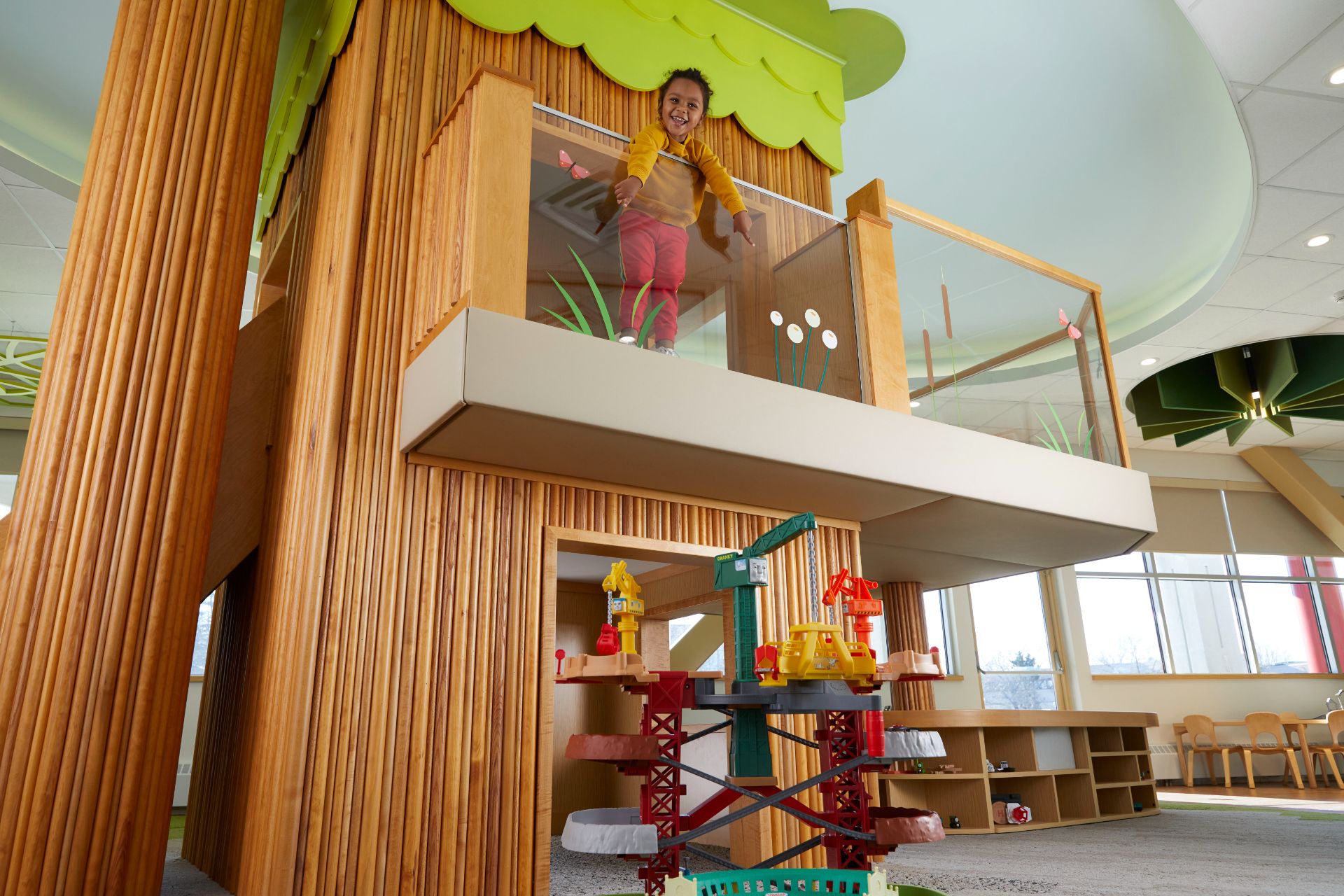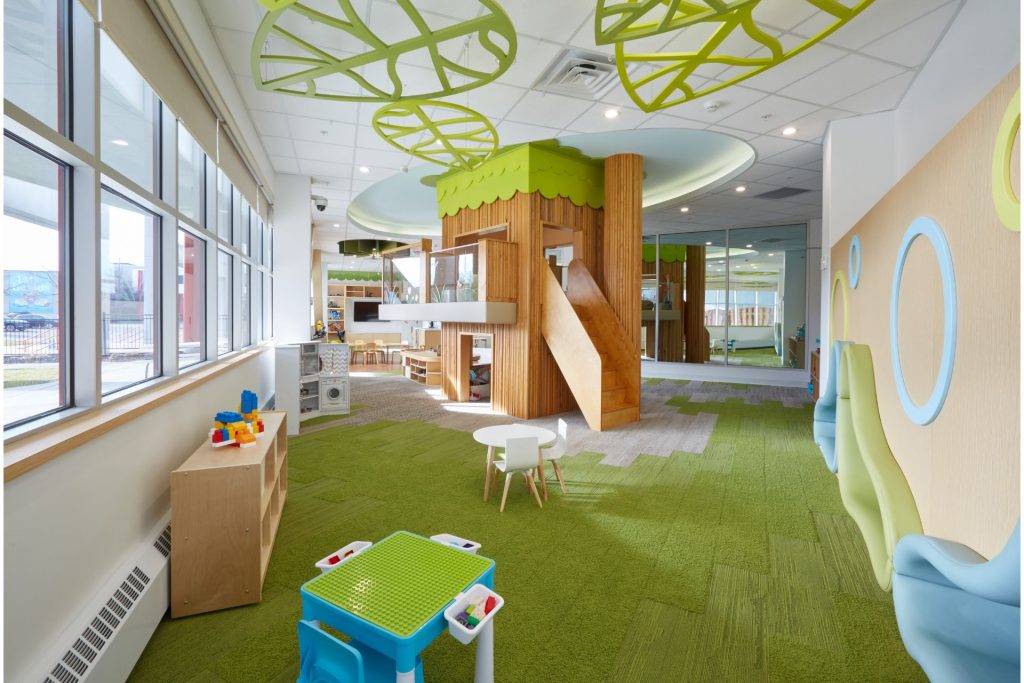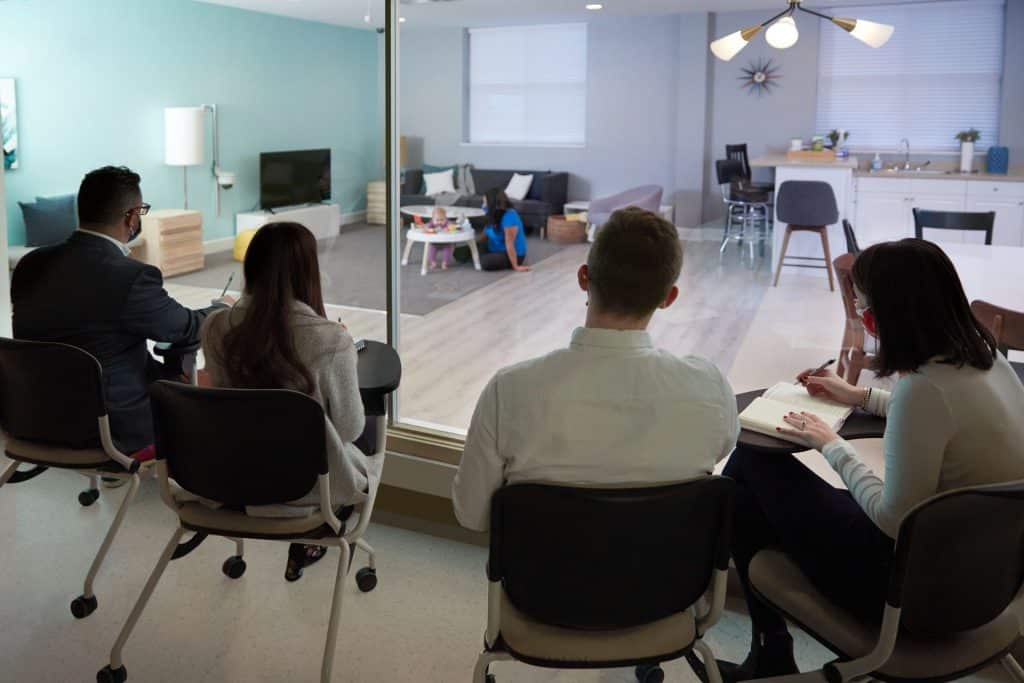Family Life
4 min Read
A Toy’s Story: How Toys Are Developed, From Concept to Playroom

July 14, 2022
Family Life
4 min Read

July 14, 2022

We toured the Fisher-Price head office to learn more about how toys are developed, giving new meaning to the term “a toy story.”
When we walk into toy stores, we see shelves of toys each promising to entertain and educate our children—this one helps with fine motor skills, that one teaches the ABCs, this one helps your baby learn to crawl. Every toy, it seems, has some sort of developmental purpose, some way of enriching a child’s life. So, what exactly goes into how toys are developed and how do toy manufacturers know that this koala is going to teach my child to count? ParentsCanada recently had the chance to visit the head office of Fisher-Price in East Aurora, just outside of Buffalo, New York, to find out.
At Fisher-Price, toys aren’t created in a boardroom vacuum. Instead, Fisher-Price uses a space they call Play Lab—a huge playroom that looks like a daycare, surrounded by windows, where children and their parents come to play, and where the Fisher-Price development team comes to study.

Fisher-Price co-founder Harm Fisher developed the Play Lab in 1961. Back then, it was called the Children’s Research Center. It was the first of its kind in the toy industry. Fisher was passionate about putting toy concepts to the ultimate test of success, which, for him, meant real-life play with kids. “He really understood the value of observing children at play to make sure that we could create toys that were fun, exciting and developmentally appropriate,” says Deborah Weber, Senior Director, Early Childhood Development Research.
“The Play Lab’s role is to give the development teams—those designers and engineers—an opportunity to observe the children they’re creating for at play,” says Weber. “That’s how we create the best play-based experiences for kids around the world.”
Early childhood development experts work in conjunction with toy designers, engineers, musicians and content producers to evaluate every detail of the toy, incorporating feedback about play patterns and what children did or didn’t respond to in the toy. They also utilize the latest evaluation technology, including tools that measure facial expressions to provide emotional analysis, as well as eye-tracking technology to measure feedback from young testers who can’t yet articulate their feelings using their own words. The use of this technology allows Fisher-Price to literally see a toy through the eyes of a child.

From toy concept to prototype, the Fisher-Price Play Lab plays a key role in allowing Fisher-Price to create the richest play-based experiences for children.
When Fisher-Price wanted to develop a mindfulness tool for toddlers, they wondered how kids as young as two would respond to a meditation practice. They developed the new Meditation Mouse, a soft plush mouse that guides children through a meditation practice. The Play Lab served a key role in the development of Meditation Mouse, by studying the ability of toddlers and preschoolers to understand and follow the exercises and prompts, as well as to determine exercise length, pace of narration and voice appropriateness.
Some toys get fundamentally edited after their time in the Play Lab. Take Storytime Thomas: “Storytime Thomas really started as sort of a choose-your-own adventure toy, but soon as we started to put prototypes in the Play Lab, we quickly realized that [the toy was probably too advanced] for what these children could do. So we simplified the content and we simplified the interface,” says Kurt Huntsberger, Vice President, Design.
Each year, Fisher Price brings in more than 2,500 children and 1,800 parents to the Play Lab where toy experts watch, listen and learn from their observations as a part of the process of how toys are developed. “Play Lab is the heart of Fisher-Price because it’s where the magic starts,” says Weber. “It really helps us to make better toys.”